Hello friends, greetings to all especially the community of @steemstem which always educate us with quality content, today I want to make reference in this publication about one of the most dangerous diseases that exists in the world is about the Salmonellosis infectious disease produced by Enterobacteria, a disease that is generated from the contact of one of the main agents that is found in our homes, if friend as he listens to it, the animal the cucachara is the main causative agent of this disease, product of this system of our body begins to be left until the infectious bacteria attack our entire body.
Human salmonellosis is an infectious disease caused by enterobacteria of the genus Salmonella. It comprises a set of clinical pictures whose main manifestation is acute gastroenteritis, one of the most common alimentary infections caused by ingesting water and contaminated food, especially meats Salmonella and the genus Salmonella are a Latinization of the name of Daniel Elmer Salmon (1850 - 1914), a US veterinarian.
Etiology
Salmonellosis is a group of diseases produced by the microbial genus Salmonella. Not all recognized species, strains or serotypes have the same pathogenic potential. The main etiological agents correspond to Salmonella typhi, Salmonella paratyphi, Salmonella typhimurium and Salmonella enteritidis.
They are Gram-negative bacilli, facultative anaerobes from the family Enterobacteriaceae. They are mainly associated with the intestinal flora and, therefore, water and food that have contacted fecal material. They produce large quantities of gas during the fermentation of sugars, and carry out a mixed acid fermentation, producing a large amount of acid products and gases.
The main reservoir of Salmonella is the intestinal tract of domestic and wild birds. Especially gulls, pigeons, turkeys, ducks, parrots and shorebirds stand out.
Pathogeny
Its pathogenesis begins with the ingestion of the inoculum, which can vary from 103 to 106 cells. If the inoculum is large enough, it will overcome the gastric barrier that the acidic pH represents. The pathogen manages to cross the intestinal barrier and is phagocytosed at the level of the M cells of the enterocytes and peyer's patches (this usually occurs at the level of the terminal ileum and first portion of the colon). Its protection against polymorphonuclear cells, complement system and immunoglobulins allows it to spread lymphatically and colonize the territories of the liver and spleen. It will then begin to multiply and increase in number, increasing the possibility that a host will suffer from bacteremia.
Clinical charts and terminology (dialectal differences)
The term "salmonellosis" includes different clinical pictures: "typhoid fever", produced by S. typhi or S. paratyphi (tiffin salmonellae), and "nontyphoidal salmonellosis", produced by other subspecies (non-typhoid salmonellae).
It is a must mention that, while in America the "typhus" is the disease produced by Rickettsia prowazecki, in Spain "typhus" can also refer to typhoid fever caused by Salmonella.
Typhoid fever and paratyphoid fever
The causative agent of typhoid / paratyphoid fever is Salmonella typhi or Salmonella paratyphi types A, B and C (which cause milder conditions).
It is acquired from another patient or an asymptomatic carrier through contaminated food or water.
Its prevalence is low in Europe and higher in the Third World countries, where there are 17 million cases a year, 6,000 of which end in death. Children under 1 year old are especially susceptible. Resistance to treatment is now emerging, which considerably complicates healing.
The incubation time of the disease varies from 3 to 21 days, depending on the inoculum, age, health and other characteristics of the patient.
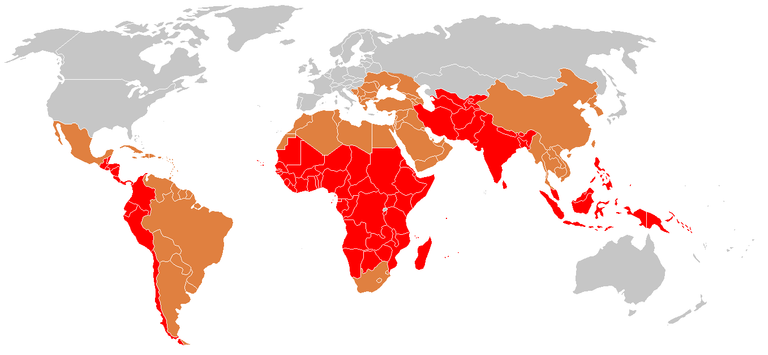
Pinture Credits : wikimedia
Clinic
Evolution
Chills, headache, nausea, anorexia, cough and diarrhea or constipation appear. The fever is prolonged and varies from 38.5 ° C to 40 ° C. Between 20 and 40% of the cases present abdominal pain.
Typhoid roseola appears during the first week and lasts 2 to 5 days: its appearance is salmon-colored maculo-papules that, in a culture, will be positive for Salmonella.
Sometimes we can also find hepatosplenomegaly, epistaxis, relative bradycardia, and even delusions (they collect imaginary objects) and coma (typhos).
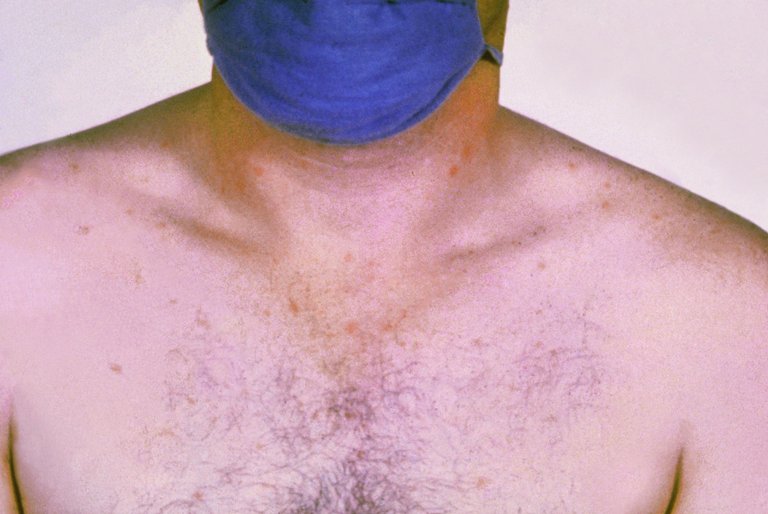
Pinture Credits :wikimedia
Complications
They occur during the third and fourth week, especially if the disease is not treated. The most frequent are intestinal perforations and enterorrhagia. Other less common ones that may also appear are abscesses, endocarditis, osteomyelitis, meningitis or hepatitis.
Approximately 1.5 percent will be chronic carriers; Urine or faeces culture will be positive more than one year later. This is more frequent in women, and is also associated with other pathologies such as gastrointestinal neoplasia and cholelithiasis.
Diagnosis
The medical history can be very suggestive; They highlight all the data on febrile syndromes after the return of a trip. Differential diagnosis should be made with malaria, bacterial enteritis, acute HIV infection, amebiasis, rickettsiosis and leptospirosis.
The diagnosis of certainty is given by positive cultures. In 90 percent they will be positive during the first week, while only 50 percent will be positive during the second week. It must be borne in mind that antibiotics have not been administered before the culture was taken, because they lower their yield. Stool cultures will test positive even during the third week. The gold standard will be the culture of bone marrow.
In laboratory tests, leukopenia and neutropenia can be observed in 10-15 percent of cases, and a slight elevation of AST, ALT, and AF (transaminases).
Treatment
In the preantibiotic era, mortality was 15 percent. When chloramphenicol began to be used in 1948, it dropped to 1 percent, and it was observed that the fever was reduced to 3-5 days. However, resistances began to appear, and it was observed that it produced spinal aplasia. A combination treatment of ampicillin (1 g / 6 h), amoxicillin (4-6 g / day) and cotrimoxazole (every 12 h for 10-14 days) was started, but in 1989 multiresistant strains (MDR) appeared. Ceftriaxone (a cephalosporin, 1 g intravenously or intramuscularly every 24 hours for 3 days), or ciprofloxacin (one quinolone, 500 mg / 12 h / 10 days) is currently used.
There are some indications of specific complications. If there is sepsis, dexamethasone should be used. In chronic patients, treatment with ciprofloxacin should be extended to 4-6 weeks. Sometimes a cholecystectomy is also indicated.
Nontyphoidal salmonellosis
The most frequent causative agents are Salmonella enteritidis and Salmonella typhimurium. Its prevalence increases considerably in summer, especially in the elderly, children and immunosuppressed. It is also more serious when it coexists with other diseases with other pathogens such as bartonella, malaria or parasites.
Its main reservoirs are animals, among which are reptiles, pets (cats and dogs, especially) and various birds.
Its transmission depends mainly on contaminated products:
- Eggs: Salmonella enteritidis infects 1/20000 eggs (one in twenty thousand) that, when used in tortillas, mayonnaises and other products, cause 80 percent of acute gastroenteritis. [Citation needed]
Currently, Salmonella typhimurium is presenting with resistance to antibiotics, due to bacteriophage DT104, which is already present in 34 percent of strains in the United Kingdom
Clinic
Evolution
The most representative sign is diarrhea. It is indistinguishable from other acute bacterial or viral gastroenteritis. It courses with vomiting and nausea; Diarrhea occurs 6 to 48 hours after the contaminated intake. The diarrhea is small and is not hemorrhagic. There is fever of 38-39 ° C and, occasionally, abdominal pain that can manifest itself with the clinical manifestation of pseudoappendicitis or inflammatory bowel disease.
Gastroenteritis is self-limiting at 3-7 days, and fever subsides in about 72 hours. Stool cultures will be positive for 4-5 weeks.1% of patients remain as chronic carriers.
Complications
Salmonella has a certain preference for the vessels. In fact, 5 percent of blood cultures will test positive. This indicates a bacteremia, which should be treated with antibiotics. Normally this is related to Salmonella cholera-suis or Salmonella dublin.
Other vascular complications:
- Endoarteritis: Suspected when more than 50 percent of blood cultures are positive.
- Endocarditis: If there is a previous valvulopathy (not infrequent).
- Arteritis: In patients with prosthesis, with by-pass or with atheromatous plaques.
Five percent of patients who have bacteremia have a localized infection:
- Intra-abdominal: Hepatic abscess, splenic abscess or cholecystitis. It occurs more frequently in women, in patients with neoplasms and with cholelithiasis. The treatment is - - surgical.
- Central Nervous System
- Pulmonary
- Urinary tract
- -Bones and joints_
- Soft tissues
Diagnosis
It is mainly based on stool cultures, cultures of other tissues and blood cultures if bacteremia is suspected (as it could be, for example, the case of a febrile syndrome that lasts longer than expected).
The finding should be reported immediately to the nearest preventive medicine office.
Treatment
Antibiotics should not be administered systematically. Antibiotics do not modify the clinical course of the disease and, nevertheless, they facilitate relapses, while delaying the elimination of the microorganism. Rehydration is the main treatment in this disease, to promote the recovery of water and electrolytes.
Antibiotics should only be given if there is a risk of the bacteria spreading in the body. They should be administered orally or intravenously for 2-3 days, until the fever subsides. If local infections or bacteremia appear, resistance to the antibiotic should be suspected. In this case, third-generation cephalosporins or ciprofloxacin (a quinolone) should be administered.
In patients with HIV (immunosuppressed), the treatment will be 1-2 weeks intravenously and 4 weeks orally. In patients with endoarteritis or endocarditis antibiotics will last for 6 weeks, and cephalosporins will be added.
Prophylaxis and control
To prevent and facilitate the cure of this disease, it is essential to prevent the abuse of antibiotics that currently exists. The result of the indiscriminate use of antibiotics is the appearance of strains of multiresistant S. thyphimurium, some strains, including quinolones. Other varieties of salmonellosis, such as that produced by Salmonella choleraesius in Taiwan, have become resistant to ciprofloxacin.
The World Health Organization (WHO) has taken several guidelines to prevent the expansion of antibiotic-resistant strains, through the following measures:
- Control of breeding birds
2 . Microbiological control of food and water
3 . Control of poultry production and its environment
Animals should also receive treatment (especially cattle, the main reservoir of S. typhimurium.
It is very important to also monitor the food industry throughout the production chain, including the handling of the raw material and the final product. Dairy products must be strictly controlled and pasteurized before human consumption.
It is a notifiable disease, which helps detect cases early before epidemics occur.
Infections localized by salmonella
Arthritis
It's usually very rare, but it happens. It can affect anyone and is due to certain complications after a gastrointestinal infection by Salmonella. Salmonella typhimurium and salmonella enteritis often cause arthritis. Symptoms are joint pain in the affected area, apart from gastrointestinal symptoms. The treatment is simple, the same antibiotics to fight salmonellosis. It can be in the feet, in the shoulder, in the knee, in any joint. These bacteria usually cause reactive arthritis.
Meningitis
It is also rare, but if it happens, it can be very dangerous. It usually affects babies who were born prematurely or who have a problem due to weight or problems with their body's defenses. It is caused by a specific salmonella; the salmonella rubislaw. It is a zoonosis from lizards; so those who have babies or pregnant mothers and has lizards as pets; he has the obligation not to approach them; This also applies to children under 5 years old and people with problems in their defenses (AIDS, for example). The treatment is somewhat complicated, due to the rapidity of the infection.
Osteomyelitis
It is also rare. It usually occurs in patients with chronic diseases such as diabetes, lupus and others that can cause problems to the defenses. Also bone trauma (open fractures), can cause osteomyelitis; but sometimes, it's not because of salmonella; That's why it's weird. The symptoms; the same in infectious osteomyelitis; pain in the area of the affected bone, fever and anemia. This localized infection is due to a previous complication of a gastrointestinal infection; so it can sometimes present symptoms of salmonellosis or typhoid fever. The treatment is the same for gastrointestinal infections caused by this bacterium, including for the treatment of osteomyelitis.
Pneumonia
Pneumonias can also be caused by salmonella. Salmonella enteritidis can be the causative bacteria, and is usually lymphatically. Sometimes, it does not cause gastrointestinal symptoms. Those who have lung cancer is a risk factor for an infection like this. There are usually many abscesses in the pulmonary parenchyma and it is usually very serious. The treatment has to be fast, especially, parenterally.
Refereces :
- Mining Approach Systematically Links Genes to Traits. PLoS Biol [1] Last access 10 Nov 2007
- MedlinePlus - Medical Encyclopedia: Salmonella enterocolitis.(http://www.ispch.cl/lab_amb/serv_lab/salmonella.html) [2]
- Institute of Public Health of Chile. http://www.ispch.cl/lab_amb/serv_lab/salmonella.html
- RIBEIRO, Vinicius B., ANDRIGHETO, Cristiano, BERSOT, Luciano S. et al. Serological and genetic diversity between Salmonella strains isolated in a salami processing line. Braz. J. Microbiol. [on-line]. 2007, pp. 178-182. Available from: [3]
Bibliography :
- Farreras Valentí P. (2004). Internal Medicine. Madrid: Elsevier. .
- Lesser, Cammie F .; Miller, Samuel I. (2006). «Salmonellosis». Harrison. Principles of internal medicine. Madrid: McGraw-Hill Interamericana.
- Cohen JI et al. (1987). «Extra-manifestation of Salmonella infections». Medicine 66,p. 349
- Glynn MK et al. (1998). «Emergence of multidrug-resistant Salmonella enterica serotype typhimurium DT104 infections in the United Staes». N Engl J Med 338 (1). p. 1333
- CFIA Website: Salmonellae
- PUBMED - Salmonellosis
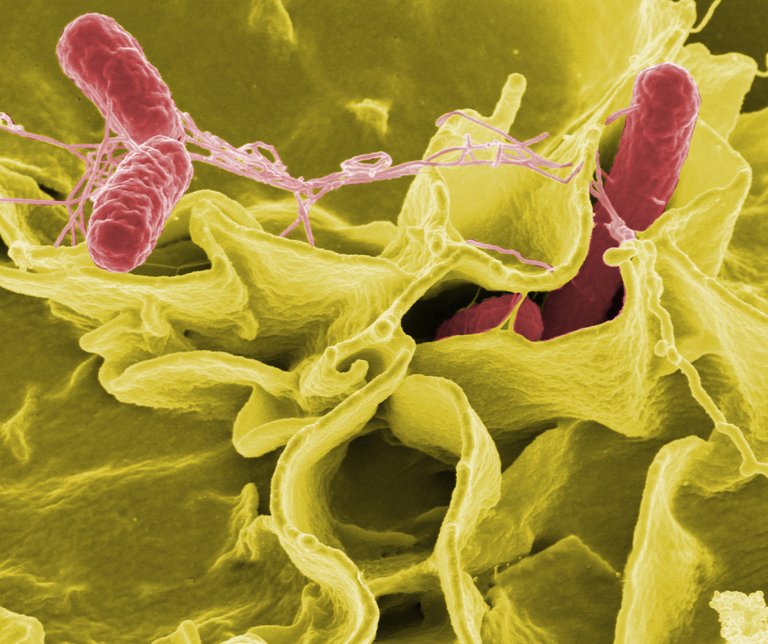
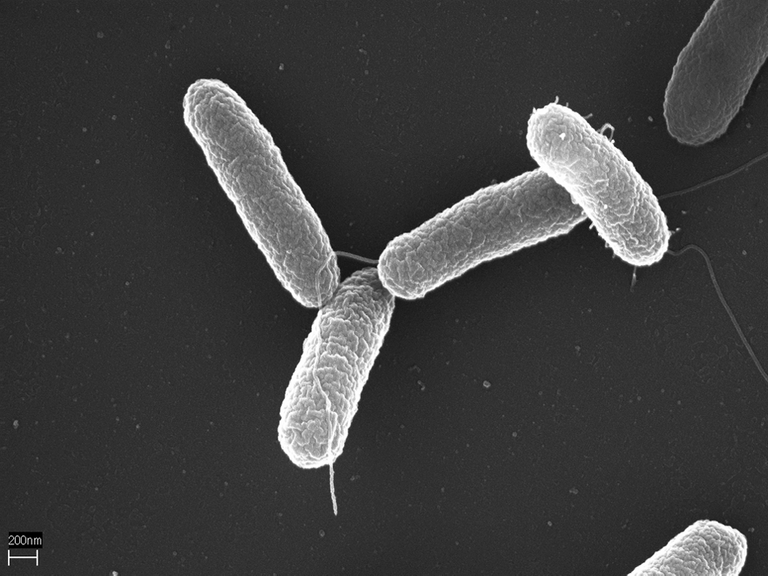
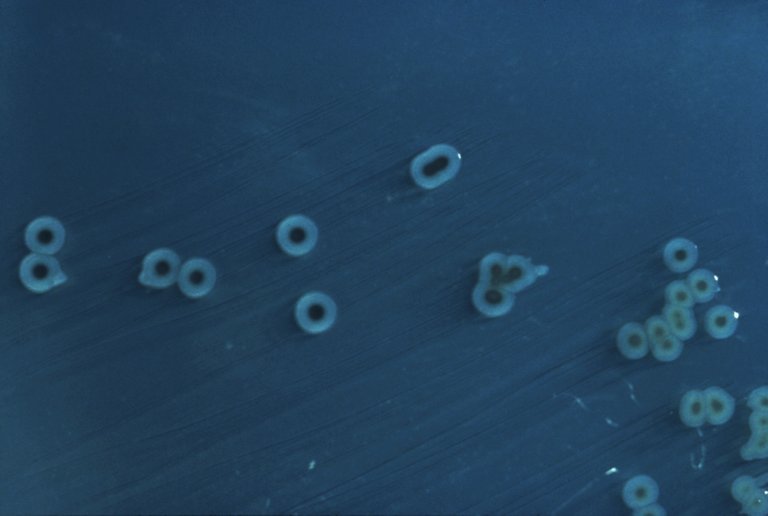
excellent publication for @steemstem, greetings and I follow you good content ..